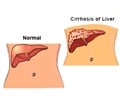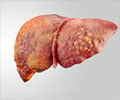Causes
Genetic mutation causes Wilson's disease and is passed from one generation to the next. But, to develop the disease you must inherit two copies of the defective gene, one from each parent. If you receive only one abnormal gene you're considered a carrier, but can pass the gene to your children, though you may be healthy. This kind of inheritance is called autosomal recessive pattern of inheritance.
The mutation that is the cause of Wilson's disease occurs is in a gene called ATP7B which is present on Chromosome 13. When a mutation occurs on this gene, it leads to problems with a protein that's responsible for moving excess copper out of your liver.
Your body collects copper from the food you eat during the digestive process and is transported to your liver where liver cells use it for everyday tasks.
Common foods that contain copper in our daily diet include - chocolate, nuts, mushrooms, liver, and shellfish are particularly rich sources. Copper is absorbed by intestines and transported in the blood to the liver. Here some of it is stored as a protein called ceruloplasmin.
In people with Wilson's disease, the extra copper doesn't leave your body but builds up in the liver, where it can cause serious damage. In time, excess copper leaves the liver and begins accumulating in and harming other organs, especially the brain, eyes and kidneys.
Excess copper absorption is also responsible for Indian childhood cirrhosis. It appears to be caused by ingesting milk that has been stored or boiled in corroded copper or brass vessels. These utensils are commonly used in Indian households.
British neurologist Dr. Samuel Alexander Kinnier Wilson first described the condition in 1912 and hence the disease is named after him.









